Walking in the Footsteps of the Original Queen B
June 26, 2015
Whenever I mention to someone that I have an interest in Anne Boleyn, the most influential and infamous of Henry’s six wives, these topics always come up:
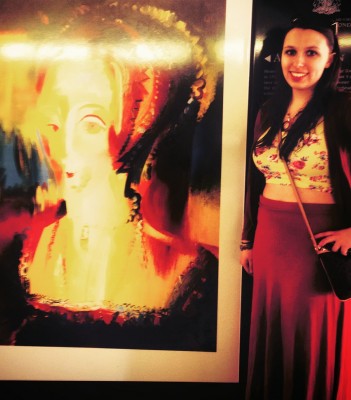
1) Yes, of course I have watched “The Tudors.” Jonathan Rhys Meyers (who plays Henry) is a very beautiful man and Natalie Dormer is just as flawless playing Anne here as she is playing Margaery Tyrell on “Game of Thrones” (though, let’s hope Margaery has a happier fate than Anne).
2) You know how on “The Tudors” Jonathan Rhys Meyers’ Henry is athletic, intelligent, charming and physically attractive? Well, that was the Henry that Anne knew, making why she would be attracted to him obvious.
3) The reason I find her fascinating is because she was ahead of her time. During a time when queen consorts were expected to do little more than produce heirs, Anne was someone Henry saw as his intellectual equal. As queen, she was deeply committed to reforming education and religion as well as helping the poor. She loved to dance and sing. Everyone was always on the edge of their seats waiting for what she was going to do or say next. Anne was basically the Beyoncé of Tudor England.
One of the things I was most excited to do during my time abroad in England was to visit some of the places connected to my favorite Queen B’s life and legacy.
Hever Castle
The number one location I knew I had to visit while here was Anne’s childhood home, Hever Castle, which is located in Hever, Kent. For the student price of £12.80, I went with my friends Adele and Nicole for a tour of the Hever Castle and gardens.
After enjoying a brief walk along the palace grounds and noting how the shrubs were all shaped as various farm animals, we made our way to the double-moated castle to take a tour inside. While I was trying to wrap my head around the fact that I was really walking through a home that Anne once called her own, Adele and Nicole were just as amazed by the castle’s exquisite antique furniture. Photography was not allowed inside the castle, but I personally think this contributed to my enjoyment of the tour, as I was far more focused on taking everything in with my eyes rather than worrying about the image through a lens. (The exterior of the castle served that purpose well anyways.)
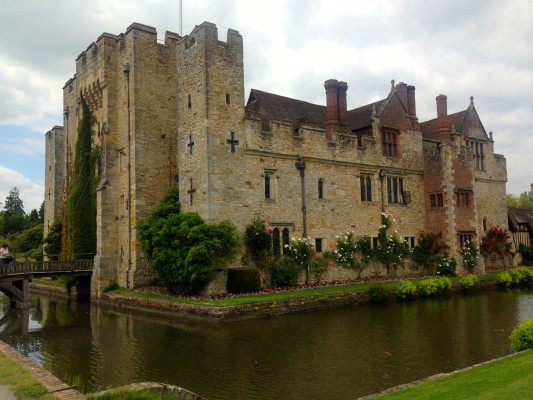
There were two rooms which made me feel particularly connected to Anne. The first was the Book of Hours Room, where two of Anne’s personal prayer books (complete with inscriptions in her own handwriting) were on display. I felt like the inclusion of Anne’s prayer books were important, considering she was instrumental in religious reforms such as encouraging Henry to have The Bible translated into English so that more people could read Scripture. The second room was an exhibit in the Long Gallery in which costumed figures of Anne, Henry and Katherine of Aragon (Henry’s first wife) illustrated important events leading up to Anne’s marriage to the king. The figure of Anne reading a love letter from Henry certainly reminded me of a scene in “The Tudors” in which Natalie Dormer’s Anne does the same.
Following the impressive tour, we could not resist giving the yew maze (a Tudor-inspired grass maze) a try. However, our fear that we would get lost proved true. “Henry would not have had the patience for a maze like this, he would have chopped his way out with a sword. Can we give that a try?” I joked. When we saw that a couple of young children had successfully mastered the maze not once but twice, we became all the more determined and finally made our way out of it.
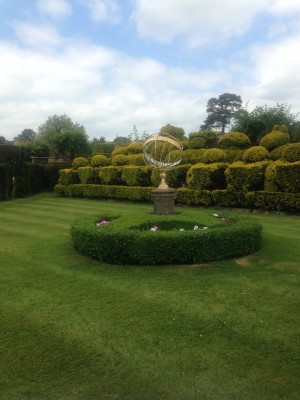
Having conquered the yew maze, we spent the remainder of the visit walking through the beautiful gardens and enjoying Hever’s shops. The Rose Garden’s color-coordinated flowers were a sight to see, as were the marble statues lining the Italian Garden. Even though many aspects of these gardens are more modern additions, I could not help but picture Anne walking through them or sitting by the lake to read. Of course, we also had to stop at the gift shop, where I purchased an Anne tote bag, postcards and a mirror for only about £10.
It was definitely a moving experience to have walked in Anne’s footsteps and seen the very rooms in which she once lived. Exploring Hever inspired me to further consider various questions regarding Anne. What really went through her head when she received those love letters from Henry while she was at Hever? What would Anne say if she knew that, hundreds of years later, there are people who visit her childhood home on a daily basis (not to mention the countless works of fiction her life has inspired)? Would she have been a fan of Beyoncé? Regardless of the answers to those questions, I knew that Hever was only my first stop in terms of places which have relevance to Anne’s life.
Oxford
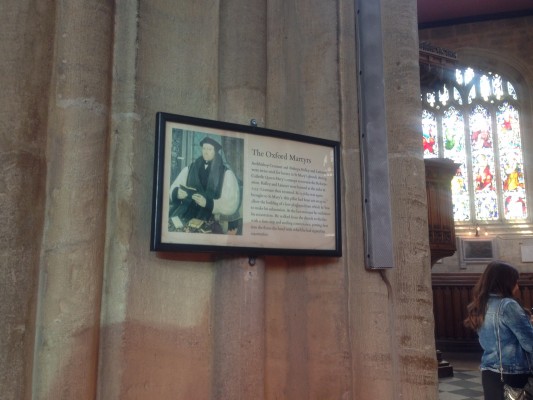
While visiting Oxford University, I did not see any signs of Anne herself, but I did see a special memorial in Christ Church to the man who was #TeamAnne hundreds of years before I was even born: Thomas Cranmer, Archbishop of Canterbury. Memorialized in this particular church as a martyr of the English Reformation, Cranmer holds a special place in my heart as someone who never doubted Anne’s innocence even as she faced death. Once declaring that he “never had better opinions of woman than [he] had of her,” Cranmer is believed to have wept upon hearing that Anne was beheaded under the false, ridiculous charges of adultery, witchcraft and incest on May 19, 1536.
National Portrait Gallery
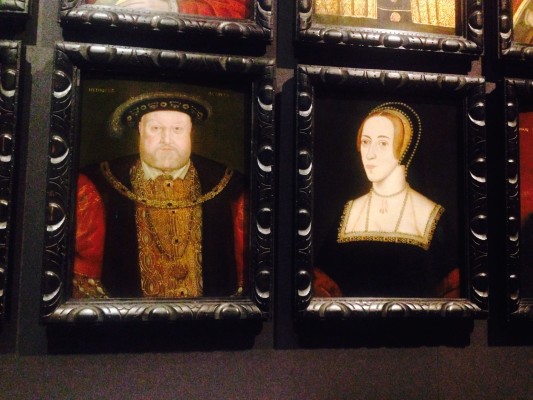
When I visited the National Portrait Gallery, I expected to see at least one photo of Anne, but the one I saw was not the one I thought would be there. I was hoping to see the iconic, smiling painting of Anne that is usually the most common image associated with her (if you Google “Anne Boleyn”, it is the first image that you will see). Instead, I saw a miniature oil painting (pictured above) of her beside Henry and part of a panel that also included William the Conqueror and King Stephen. I was awed by the fact that the artist (who is unknown) thought that Anne deserved to be included in such an exclusive panel. When I checked the date of the painting, it was listed as being done between the 1590s and the 1620s. Since Anne’s daughter Elizabeth reigned from 1558 until 1603, it is possible that Anne’s inclusion was a nod to her significance as Elizabeth’s mother—but what if it was indeed done after 1603? In any case, it certainly made my day to see Anne receiving such respect.
Tower of London
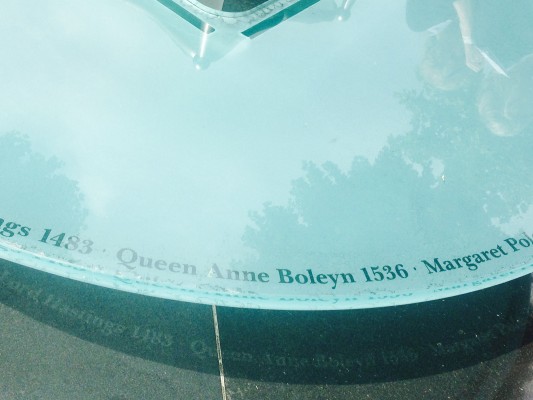
Of course, considering my goal of walking in Anne’s footsteps, I absolutely had to pay a return visit to the Tower of London. It is the only “Anne Boleyn location” I saw when I visited London years ago with my parents, and also the place that initially inspired my fascination with her. To this day, I remember purchasing a book about Henry’s six wives and was particularly intrigued by Anne since I was already familiar with her daughter, Elizabeth, and found the idea of her dying under false charges horribly tragic.
Returning to the Tower of London for a second time, with years of reading and writing about Anne now behind me, was definitely a rewarding experience. I still made sure to do a Yeoman Warder tour (they really are entertaining), look at The Crown Jewels and explore The White Tower, three things I had done during my previous visit. This time, however, I made a point of stopping by the Anne memorial located at Tower Green (pictured above), the place where Anne was executed. It felt particularly eerie to stand at the very spot where Anne spent her last moments on Earth. I also felt certain that, as proven by all the places throughout England where Anne is still remembered, her legacy still lives on through the people (such as me) who still admire her.












Marlessa Stivala • Jun 29, 2015 at 8:50 am
Christina, this is a college newspaper aimed at a college audience. Thus, the joking “comparison” between the two is merely to make Anne seem applicable to college students who may not be familiar with her story or legacy (i.e. since many of Beyoncé’s fans call her “Queen Bey” and because of the song “Single Ladies” associate her with a strong, independent woman, I found the joke helpful to make a point). That is all.
Christina • Jun 29, 2015 at 12:07 am
Anne would probably be appalled by your comparison~ Anne Boleyn compared to Beyonce. Wow.